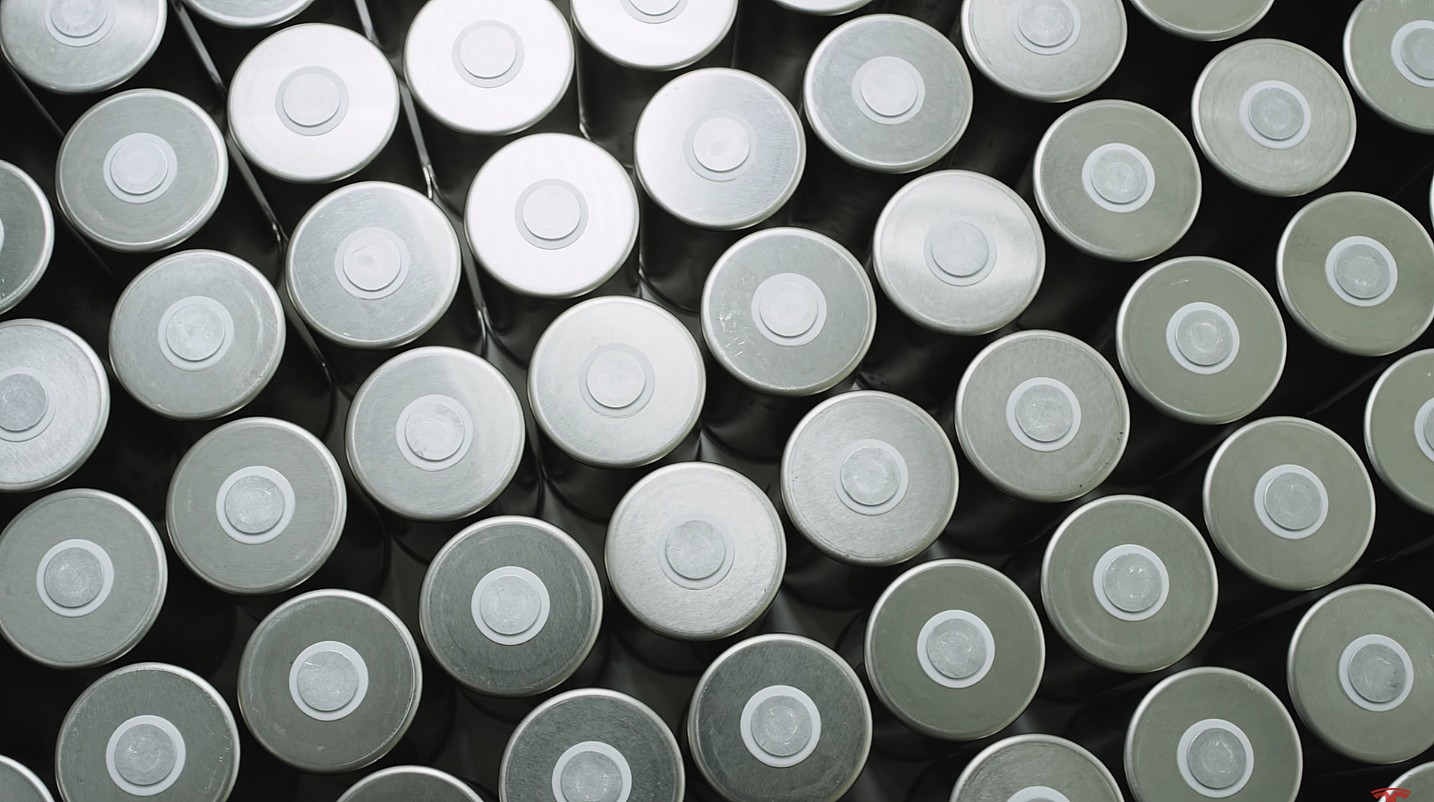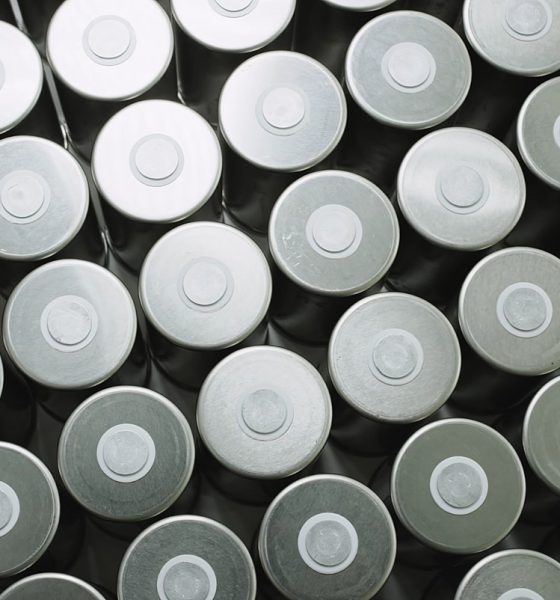

News
Biden’s $3bn EV battery manufacturing allocation is only half the battle: mining expert
Mining expert Trent Mell, CEO of Electra Battery Materials, is pleased about the Biden Administration’s allocation of $3.1 billion to promote the domestic manufacturing of electric vehicle batteries in the United States. However, Mell says the manufacturing is only half the battle, as more focus will be needed on the upstream activities of the EV battery manufacturing supply chain.
Yesterday, we reported the Biden Administration had officially announced it would launch a $3.16 billion plan to boost U.S.-based manufacturing of electric vehicle batteries. The funding will support grants to build and develop battery and battery component manufacturing facilities within the United States.
Biden Administration announces $3bn plan for U.S.-based EV battery manufacturing
The move is a small part of a much larger shift to electric vehicles, a plan that the U.S. has put in place to catch up with leaders China and Europe, who have adopted EVs at a much larger rate than Americans have. The U.S. government has set aside external goals of having 50 percent of all passenger sales be electric by 2030. Additionally, the U.S. government wants 600,000 cars and trucks within the federal fleet to be EVs by 2035.
Mell, who has pushed for domestic manufacturing of batteries and mining practices in North America, has positive thoughts regarding the new $3.14 billion Biden plan to push for more battery production in the U.S. A nudge to the largest battery manufacturers globally to invest with plants in the United States is undoubtedly a good thing, but Mell has concerns about sourcing materials and whether more facilities means more mining.
“It appears that this $3.1 billion in funding for cell plants will largely end up in the hands of some of the largest companies already operating in the EV supply chain,” Mell told Teslarati. “If my assessment is correct, the opportunity here is to convince the large, established battery makers to invest in America over other western economies. “
It is true that many of the largest battery manufacturers in the world have been scouting land in the United States, Canada, and other North American territories for potential cell production projects. CATL, the world’s largest supplier of lithium-ion battery cells, has been scouting sites for a new $5 billion manufacturing plant in the region to supplement the growing EV transition and its need for EV batteries. Building the cells is not an issue, but sourcing materials for them is.
This is where Mell’s concerns begin to rise. As battery manufacturing plants are great, there needs to be a bigger focus on upstream and midstream activities that would supplement the entire supply chain’s ability to remain consistent. “What western economies really need are new investments in upstream activities (mining) and in the midstream (chemical plants),” Mell told us in an emailed statement. “This part of the supply chain is more capital constrained and the investment cycle is a much longer one. If we don’t invest further up the supply chain, all of these battery plants will face a shortage of raw materials.”
Mell pushed for automotive CEOs, like Tesla’s Elon Musk and Ford’s Jim Farley, to pressure more EV battery material sourcing within the U.S. to reduce dependence on foreign sources. After nickel prices rose from $30,000 to $100,000 per metric ton, President Biden invoked the Defense Production Act to surge domestic production of EV materials. However, more long-tail investments need to be pushed on mining and obtaining these materials domestically, which could affect the production of EV batteries down the road.
I’d love to hear from you! f you have any comments, concerns, or questions, please email me at joey@teslarati.com. You can also reach me on Twitter @KlenderJoey, or if you have news tips, you can email us at tips@teslarati.com.

Elon Musk
Starlink passes 9 million active customers just weeks after hitting 8 million
The milestone highlights the accelerating growth of Starlink, which has now been adding over 20,000 new users per day.

SpaceX’s Starlink satellite internet service has continued its rapid global expansion, surpassing 9 million active customers just weeks after crossing the 8 million mark.
The milestone highlights the accelerating growth of Starlink, which has now been adding over 20,000 new users per day.
9 million customers
In a post on X, SpaceX stated that Starlink now serves over 9 million active users across 155 countries, territories, and markets. The company reached 8 million customers in early November, meaning it added roughly 1 million subscribers in under seven weeks, or about 21,275 new users on average per day.
“Starlink is connecting more than 9M active customers with high-speed internet across 155 countries, territories, and many other markets,” Starlink wrote in a post on its official X account. SpaceX President Gwynne Shotwell also celebrated the milestone on X. “A huge thank you to all of our customers and congrats to the Starlink team for such an incredible product,” she wrote.
That growth rate reflects both rising demand for broadband in underserved regions and Starlink’s expanding satellite constellation, which now includes more than 9,000 low-Earth-orbit satellites designed to deliver high-speed, low-latency internet worldwide.
Starlink’s momentum
Starlink’s momentum has been building up. SpaceX reported 4.6 million Starlink customers in December 2024, followed by 7 million by August 2025, and 8 million customers in November. Independent data also suggests Starlink usage is rising sharply, with Cloudflare reporting that global web traffic from Starlink users more than doubled in 2025, as noted in an Insider report.
Starlink’s momentum is increasingly tied to SpaceX’s broader financial outlook. Elon Musk has said the satellite network is “by far” the company’s largest revenue driver, and reports suggest SpaceX may be positioning itself for an initial public offering as soon as next year, with valuations estimated as high as $1.5 trillion. Musk has also suggested in the past that Starlink could have its own IPO in the future.
News
NVIDIA Director of Robotics: Tesla FSD v14 is the first AI to pass the “Physical Turing Test”
After testing FSD v14, Fan stated that his experience with FSD felt magical at first, but it soon started to feel like a routine.

NVIDIA Director of Robotics Jim Fan has praised Tesla’s Full Self-Driving (Supervised) v14 as the first AI to pass what he described as a “Physical Turing Test.”
After testing FSD v14, Fan stated that his experience with FSD felt magical at first, but it soon started to feel like a routine. And just like smartphones today, removing it now would “actively hurt.”
Jim Fan’s hands-on FSD v14 impressions
Fan, a leading researcher in embodied AI who is currently solving Physical AI at NVIDIA and spearheading the company’s Project GR00T initiative, noted that he actually was late to the Tesla game. He was, however, one of the first to try out FSD v14.
“I was very late to own a Tesla but among the earliest to try out FSD v14. It’s perhaps the first time I experience an AI that passes the Physical Turing Test: after a long day at work, you press a button, lay back, and couldn’t tell if a neural net or a human drove you home,” Fan wrote in a post on X.
Fan added: “Despite knowing exactly how robot learning works, I still find it magical watching the steering wheel turn by itself. First it feels surreal, next it becomes routine. Then, like the smartphone, taking it away actively hurts. This is how humanity gets rewired and glued to god-like technologies.”
The Physical Turing Test
The original Turing Test was conceived by Alan Turing in 1950, and it was aimed at determining if a machine could exhibit behavior that is equivalent to or indistinguishable from a human. By focusing on text-based conversations, the original Turing Test set a high bar for natural language processing and machine learning.
This test has been passed by today’s large language models. However, the capability to converse in a humanlike manner is a completely different challenge from performing real-world problem-solving or physical interactions. Thus, Fan introduced the Physical Turing Test, which challenges AI systems to demonstrate intelligence through physical actions.
Based on Fan’s comments, Tesla has demonstrated these intelligent physical actions with FSD v14. Elon Musk agreed with the NVIDIA executive, stating in a post on X that with FSD v14, “you can sense the sentience maturing.” Musk also praised Tesla AI, calling it the best “real-world AI” today.
News
Tesla AI team burns the Christmas midnight oil by releasing FSD v14.2.2.1
The update was released just a day after FSD v14.2.2 started rolling out to customers.

Tesla is burning the midnight oil this Christmas, with the Tesla AI team quietly rolling out Full Self-Driving (Supervised) v14.2.2.1 just a day after FSD v14.2.2 started rolling out to customers.
Tesla owner shares insights on FSD v14.2.2.1
Longtime Tesla owner and FSD tester @BLKMDL3 shared some insights following several drives with FSD v14.2.2.1 in rainy Los Angeles conditions with standing water and faded lane lines. He reported zero steering hesitation or stutter, confident lane changes, and maneuvers executed with precision that evoked the performance of Tesla’s driverless Robotaxis in Austin.
Parking performance impressed, with most spots nailed perfectly, including tight, sharp turns, in single attempts without shaky steering. One minor offset happened only due to another vehicle that was parked over the line, which FSD accommodated by a few extra inches. In rain that typically erases road markings, FSD visualized lanes and turn lines better than humans, positioning itself flawlessly when entering new streets as well.
“Took it up a dark, wet, and twisty canyon road up and down the hill tonight and it went very well as to be expected. Stayed centered in the lane, kept speed well and gives a confidence inspiring steering feel where it handles these curvy roads better than the majority of human drivers,” the Tesla owner wrote in a post on X.
Tesla’s FSD v14.2.2 update
Just a day before FSD v14.2.2.1’s release, Tesla rolled out FSD v14.2.2, which was focused on smoother real-world performance, better obstacle awareness, and precise end-of-trip routing. According to the update’s release notes, FSD v14.2.2 upgrades the vision encoder neural network with higher resolution features, enhancing detection of emergency vehicles, road obstacles, and human gestures.
New Arrival Options also allowed users to select preferred drop-off styles, such as Parking Lot, Street, Driveway, Parking Garage, or Curbside, with the navigation pin automatically adjusting to the ideal spot. Other refinements include pulling over for emergency vehicles, real-time vision-based detours for blocked roads, improved gate and debris handling, and Speed Profiles for customized driving styles.








